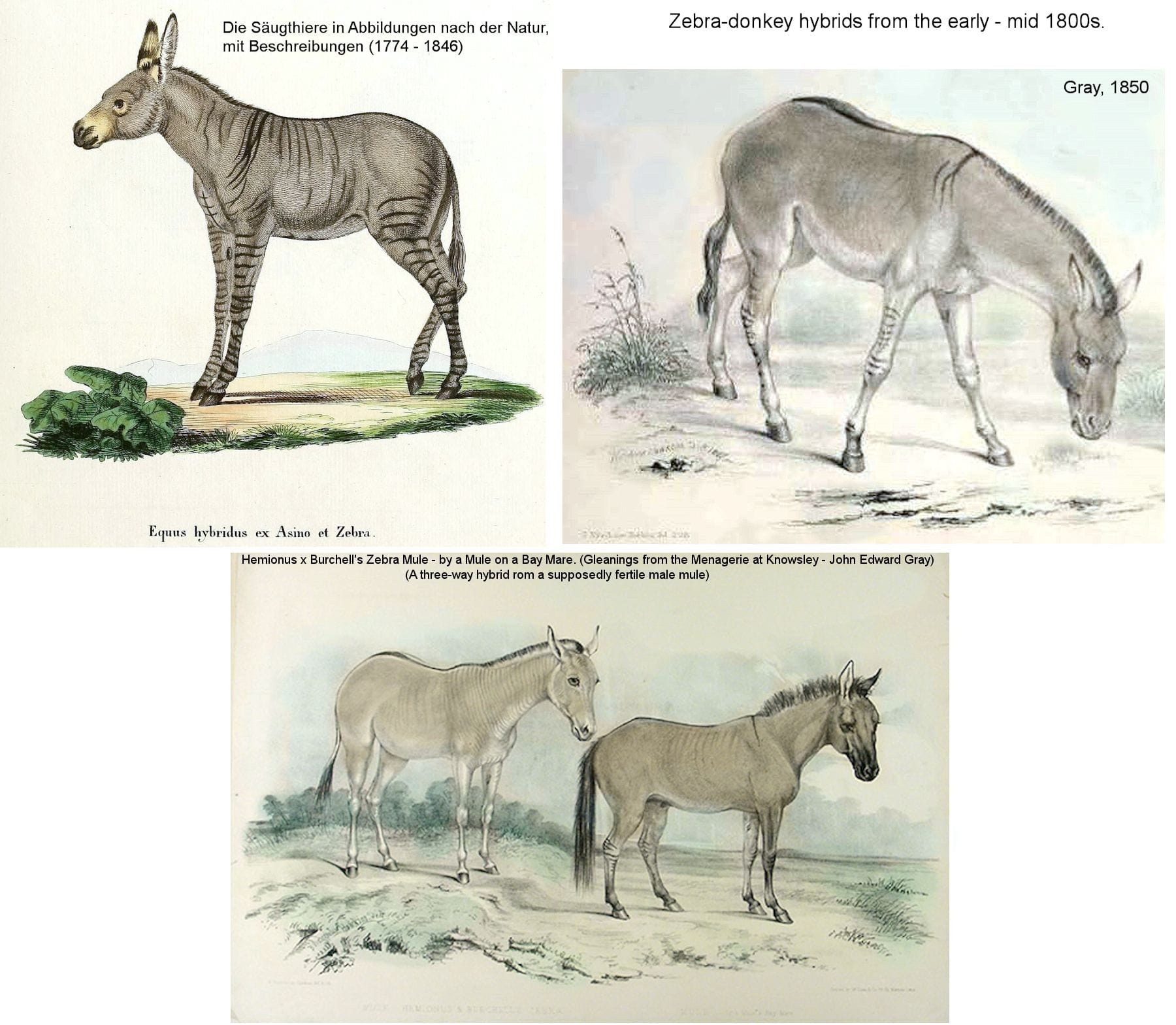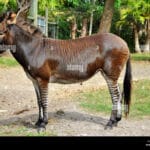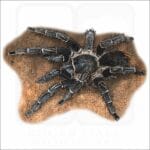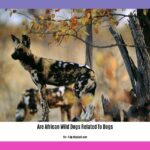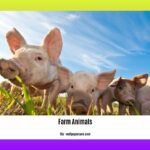Imagine a horse, but with the bold stripes of a zebra emblazoned on its legs. This captivating creature isn’t a figment of imagination; it’s a zebroid, a testament to the fascinating world of equine hybrids. This article delves into the science and ethics behind these unusual animals, from the well-known zorse to the rarer zonkey and hebra. We’ll explore the genetic mechanisms responsible for their unique coat patterns, discuss the ethical considerations of crossbreeding, and consider the future of these captivating creatures.
The Zebra’s Legacy: Stripes on a Domestic Canvas
Zebroids, equine hybrids born from the union of a zebra and another equine species, often exhibit the zebra parent’s signature stripes, adding a touch of the wild to their domestic counterparts. This captivating trait has fueled human curiosity for centuries, leading to the creation of various zebroid types. But what drives this fascination, and what are the implications for these unique animals? [https://www.lolaapp.com/goliath-birdeater-for-sale]
Zorses: A Familiar Face in the Hybrid World
Perhaps the most recognizable zebroid is the zorse, the offspring of a zebra stallion and a horse mare. While inheriting the general build of its horse mother, the zorse proudly displays leg stripes, a clear legacy from its zebra father. These stripes may also extend to the neck and rump, creating a striking visual. Interestingly, zorses are often smaller than either parent and are typically infertile due to chromosomal incompatibility. This infertility makes each zorse a unique individual, unable to pass on its distinctive blend of traits. [https://www.lolaapp.com/gooty-tarantula-spider]
Beyond the Zorse: Exploring the Zebroid Family
The term “zebroid” encompasses a wider array of zebra hybrids. The zonkey, born from a zebra stallion and a donkey mare, inherits a charming mix of both parents’ characteristics. Even rarer is the hebra, the offspring of a horse stallion and a zebra mare, posing significant breeding challenges due to the protective nature of zebra mares. Each zebroid type presents a unique combination of traits, showcasing the diverse possibilities of equine hybridization.
The Genetics of Stripes: Unraveling the Pattern
Why do some zebroids flaunt bold, defined stripes while others exhibit only faint markings? The answer lies within the complex realm of genetics. The specific zebra subspecies involved significantly influences the resulting stripe pattern, as does individual genetic variation within both parents. The horse parent provides the base coat and body shape, while the zebra parent contributes the blueprint for the striping. The interplay of dominant and recessive genes adds further complexity, making each zebroid’s coat a unique genetic tapestry. Scientists are still unraveling the precise mechanisms behind these interactions, making this an active area of research.
The Ethical Landscape: Navigating the Crossroads of Curiosity and Responsibility
The creation of zebroids prompts important ethical questions. Are we merely satisfying human curiosity, or do we bear a responsibility for the well-being of these hybrid animals? While some argue that hybridization could potentially enhance disease resistance or adaptability, others express concerns about unforeseen health complications and the social integration of hybrids within existing equine populations. The long-term health and adaptability of zebroids remain subjects of ongoing research and debate, highlighting the need for careful consideration and responsible breeding practices.
| Hybrid | Sire (Male) | Dam (Female) | Characteristics | Fertility |
|---|---|---|---|---|
| Zorse | Zebra | Horse | Horse-like build with zebra stripes, often smaller than either parent. | Typically Infertile |
| Zonkey | Zebra | Donkey | Blend of donkey and zebra traits, often with leg stripes and sometimes other markings. | Typically Infertile |
| Hebra | Horse | Zebra | Rarer hybrid due to breeding difficulties, inheriting traits from both parents. Stripes and overall appearance can vary. | Typically Infertile |
Delving Deeper into Zebroids: A Comprehensive Overview
Zebroids, the captivating offspring of zebras and other equine species, offer a fascinating glimpse into the intricacies of genetics and hybridization. These animals, often sporting the zebra’s distinctive stripes, represent a unique blend of traits inherited from both parents. Let’s explore the world of zebroids in more detail.
A Closer Look at the Zebroid Family
Zorses, born from a zebra stallion and a horse mare, are perhaps the most familiar zebroid type. While their build largely resembles that of a horse, their zebra heritage is evident in the striking stripes adorning their legs, neck, and sometimes rump. Interestingly, zorses are often smaller than either parent, a curious consequence of hybrid genetics. [https://www.lolaapp.com/goliath-birdeater-for-sale]
Beyond the zorse, the zebroid family includes other intriguing members. The zonkey, offspring of a zebra stallion and a donkey mare, displays a delightful mix of both parents’ features. And then there’s the less common hebra, born from a horse stallion and a zebra mare. The challenges in breeding with zebra mares contribute to the hebra’s rarity. The existence of these varied zebroid types underscores the diverse possibilities that arise when different equine species interbreed.
Unraveling the Stripes: A Genetic Puzzle
The inheritance of stripes in zebroids is a complex process. The zebra’s stripes are a dominant trait, meaning they are likely to appear in the offspring. However, the precise pattern, boldness, and distribution of stripes are influenced by a complex interplay of genes from both parents. This genetic complexity explains the significant variation in stripe patterns even within the same type of zebroid. One zorse might have bold, defined stripes while another exhibits fainter, more scattered markings. [https://www.lolaapp.com/gooty-tarantula-spider]
The Fertility Challenge: A Chromosomal Conundrum
A significant challenge facing zebroids is infertility. This reproductive hurdle arises from the differing number of chromosomes between zebras and other equine species. These differences often disrupt the process of meiosis, the cell division that produces sex cells, rendering most zebroids unable to reproduce. This infertility raises ethical questions about the creation of animals that, while visually captivating, likely cannot have offspring of their own. Ongoing research seeks to understand the complexities of zebroid genetics and reproductive biology.
Striped Equine: A Tapestry of Genetics and Ethics
Striped equines, primarily the product of crossbreeding between zebras and other equine species, offer a fascinating study in genetics, inheritance, and the ethical considerations that arise from human intervention in the natural world. These captivating creatures, often referred to as zebroids, are not simply horses with stripes; they are a unique blend of characteristics, a living testament to the complex interplay of genes.
Beyond the Stripes: Understanding Zebroids
Zebroids inherit a mosaic of traits from their parents. The type of zebra involved, whether a Grevy’s zebra or a Plains zebra, for instance, plays a significant role in the resulting stripe pattern. The other parent, whether horse, donkey, or pony, contributes to the zebroid’s overall build and other physical characteristics. This combination creates a diverse range of appearances within the zebroid family.
Temperament: A Wild Card
Predicting a zebroid’s temperament can be challenging. It may inherit the skittishness of a zebra or the more docile nature of a domesticated horse or donkey. This unpredictability requires experienced handlers who can adapt to the animal’s unique personality and provide appropriate care.
The Ethical Dimension: Questions and Considerations
The creation of zebroids raises important ethical questions. Some argue that breeding animals solely for their unique appearance raises concerns about animal welfare. The potential health issues associated with hybridization, including infertility and potential genetic disorders, are also points of ongoing discussion. Additionally, some conservationists argue that resources dedicated to creating zebroids might be better directed toward protecting existing zebra populations in the wild, which face significant threats from habitat loss and poaching.
The future of zebroids, like that of many hybrid animals, remains a topic of ongoing discussion. As scientific understanding of genetics and animal welfare evolves, so too will the ethical considerations surrounding the creation and care of these unique creatures. Perhaps future research will provide clearer answers to the complex questions surrounding zebroids, but for now, they remain a captivating example of the unpredictable beauty and ethical complexities of the animal kingdom.
- Identify Black and White Snakes: Venomous or Harmless? - April 20, 2025
- Unlocking Potential: Origins High School’s NYC Story - April 20, 2025
- Period Quiz: Predict Your First Period - April 20, 2025
